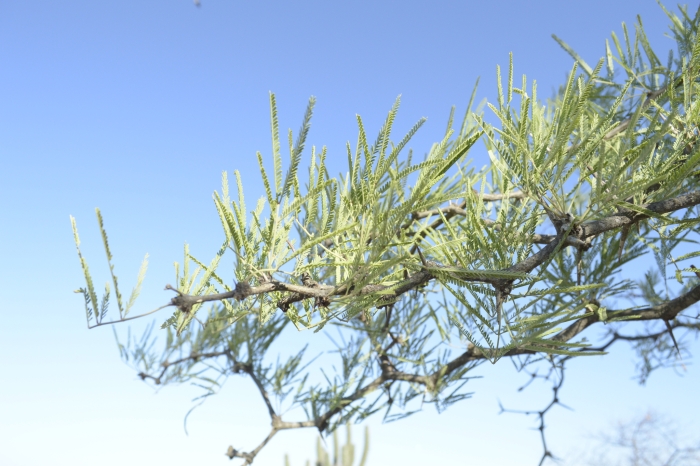Black Carob Tree
(Prosopis nigra)
Black Carob Tree (Prosopis nigra)
/
/

Jose Luis Navarro
CC BY 4.0
Image By:
Jose Luis Navarro
Recorded By:
Copyright:
CC BY 4.0
Copyright Notice:
Photo by: Jose Luis Navarro | License Type: CC BY 4.0 | License URL: http://creativecommons.org/licenses/by/4.0/ | Rights Holder: Jose Luis Navarro | Publisher: iNaturalist | Date Created: 2021-10-24T08:52:40-07:00 |

























Estimated Native Range
Summary
Prosopis nigra, commonly known as the black carob tree, is a deciduous tree native to the dry forests and thorn scrub of the Gran Chaco ecoregion in Argentina, Paraguay, and Bolivia. It is well-adapted to both arid conditions and temporary flooding, showcasing its resilience in varying environments. Prosopis nigra typically grows to a height of 15-20 feet (4.5-6 meters) with a similar spread, and features a spreading canopy with deep green foliage.
The black carob tree blooms in September and October, producing inconspicuous yellow-green flowers that are followed by fruiting from November to March. The fruit pods are elongated and contain a sweet, edible paste traditionally used to make flour and alcoholic beverages. The heartwood is notable for its dark color and density, making it valuable for crafting furniture and barrels. The wood’s high tannin content is also exploited in the leather tanning industry. In cultivation, Prosopis nigra is appreciated for its durable wood and the cultural significance of its traditional uses. It requires full sun and can tolerate a range of soil types, provided they are well-drained. While it is drought-tolerant, occasional deep watering is beneficial during extended dry periods.CC BY-SA 4.0
The black carob tree blooms in September and October, producing inconspicuous yellow-green flowers that are followed by fruiting from November to March. The fruit pods are elongated and contain a sweet, edible paste traditionally used to make flour and alcoholic beverages. The heartwood is notable for its dark color and density, making it valuable for crafting furniture and barrels. The wood’s high tannin content is also exploited in the leather tanning industry. In cultivation, Prosopis nigra is appreciated for its durable wood and the cultural significance of its traditional uses. It requires full sun and can tolerate a range of soil types, provided they are well-drained. While it is drought-tolerant, occasional deep watering is beneficial during extended dry periods.CC BY-SA 4.0
Plant Description
- Plant Type: Tree
- Height: 20-30 feet
- Width: 15-25 feet
- Growth Rate: Moderate
- Flower Color: Yellow
- Flowering Season: Spring
- Leaf Retention: Evergreen
Growth Requirements
- Sun: Full Sun
- Water: Low
- Drainage: Medium, Fast
Common Uses
Drought Tolerant, Erosion Control, Low Maintenance
Natural Habitat
Dry forests and thorn scrub of the Gran Chaco ecoregion in Argentina, Paraguay, and Bolivia
Other Names
Common Names: Black Mesquite, Ironwood, Algarrobo Negro, American Black Mesquite
Scientific Names: , Prosopis nigra, Neltuma nigra, Neltuma nigra var. nigra, Prosopis algarobilla var. nigra,
GBIF Accepted Name: